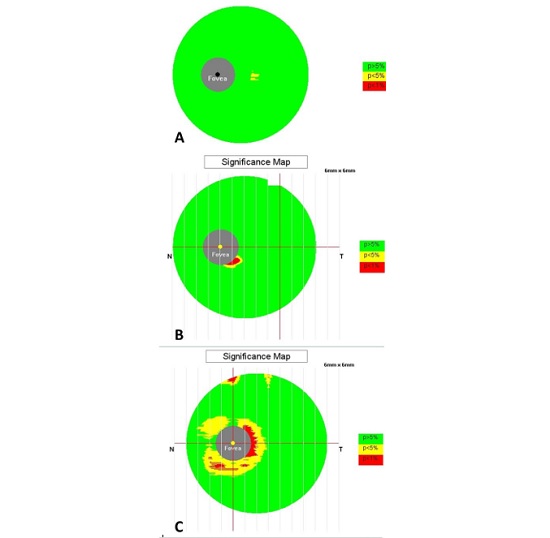Early retinal degeneration in Huntington's disease based on optical coherence tomography: A case-control study
Medical hypothesis, discovery & innovation in optometry,
Vol. 1 No. 1 (2020),
31 August 2020
,
Page 18-24
https://doi.org/10.51329/mehdioptometry103
Abstract
Background: The purpose of this study was to analyze optical coherence tomography (OCT) parameters of the choroid and retina in subjects with pre-manifest and manifest Huntington's disease (HD).Methods: In this case-control study, the retinal parameters of patients with genetically confirmed HD and healthy controls were evaluated using spectral-domain optical coherence tomography (SD-OCT). Genetic and neurological assessments were performed besides a thorough ophthalmological examination. Contrast Sensitivity (CS) logarithm was evaluated using the Freiburg Vision Test. The association between OCT parameters and clinical and genetic characteristics was studied.
Results: A total of 91 subjects, including 60 HD subjects (60 eyes) and 31 control subjects (31 eyes) were eligible according to the inclusion and exclusion criteria. The range of the CAG (cytosine-adenine-guanine) repeat expansion size was 38-56 repeats, the mean ± standard deviation (SD) of the Unified HD Rating Scale (UHDRS) motor scores was 36.3 ±29.7, and disease duration was 13.7 ±7.2 years in HD subjects. Compared to the control group, significant decreases in the mean ganglion cell complex thickness and mean, temporal, superior, inferior, and nasal retinal nerve fiber layer (RNFL) thickness in HD subjects was revealed in OCT examination (P-values < 0.001, < 0.001, < 0.001, 0.023, 0.007 and 0.014, respectively). An inverse correlation between the disease duration and the mean RNFL thickness (r =- 0.470, P = 0.002) was found.
Conclusions: Localization of retinal thickness loss shows a specific pattern of retinal neurodegeneration in HD, similar to Parkinson disease and mitochondrial diseases. The association with the disease duration confirms the progressive nature of these changes.
Keywords:
- OCT
- spectral-domain optical coherence tomography
- SD-OCT
- Huntington's disease
- neurodegenerative diseases
- retina
- optometry
- ophthalmology
- macula
- retinal

- Abstract Viewed: 365 times
- Full Text PDF Downloaded: 0 times